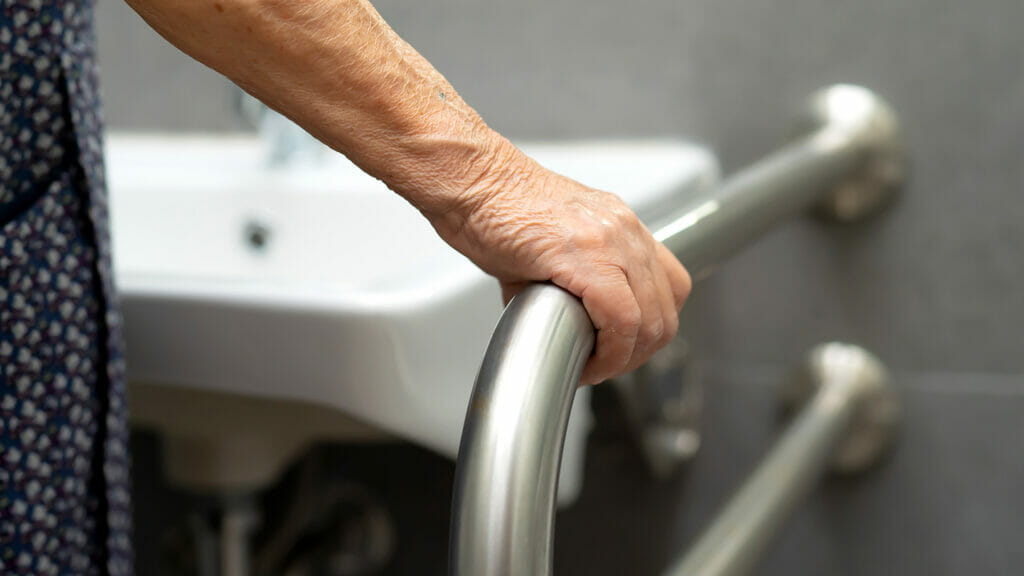
A number of seemingly small design adjustments to bathrooms, including special drains and extra handrails, could add up to major benefits for senior living communities.
For younger individuals, the bathroom may not be considered a particularly dangerous place. But for older adults, especially those with cognitive or mobility issues, a trip to the bathroom easily can become deadly: 80% of falls that occur within senior living communities happen in the bathroom, some studies show. And two-thirds of residents fall at least once each year, with 20% to 30% of those accidents resulting in severe injuries or death.
Smart lighting systems have become an important element of making bathrooms safer for older adults.
Some aspects of systems useful for bathrooms include: adjustable light intensity, changing colors for mood and either motion sensors or voice-activated controls, one recent story notes.
Other features that are becoming more common include sloping floors that lead to a trench train, and built-in textured flooring, designed to make the bathroom less slippery, a recent report notes.
Assisted devices that reduce falls include handrail and sturdy grab bars, and in some cases, the absence of installations, such as barrier-free showers, are also part of the equation.
The combined overall picture of a “smart” bathroom includes technologies such as fall-detection sensors and even “smart” toilets that can help determine if an older adult is at risk.
New innovations not only make the bathroom safer but also help restore some dignity to what may have become an unpleasant experience for older adults, the manufacturer of SedMed, a mechanical toilet lift, told McKnight’s last month.
Other recent reports on designing safer environments for older adults recommend staff member input to ensure that spaces are balancing clinical needs.
A research paper produced last year by Accora also discussed the need for textured flooring and wheelchair-accessible showers. The paper also added lighting and calming color aesthetics as considerations as well.


